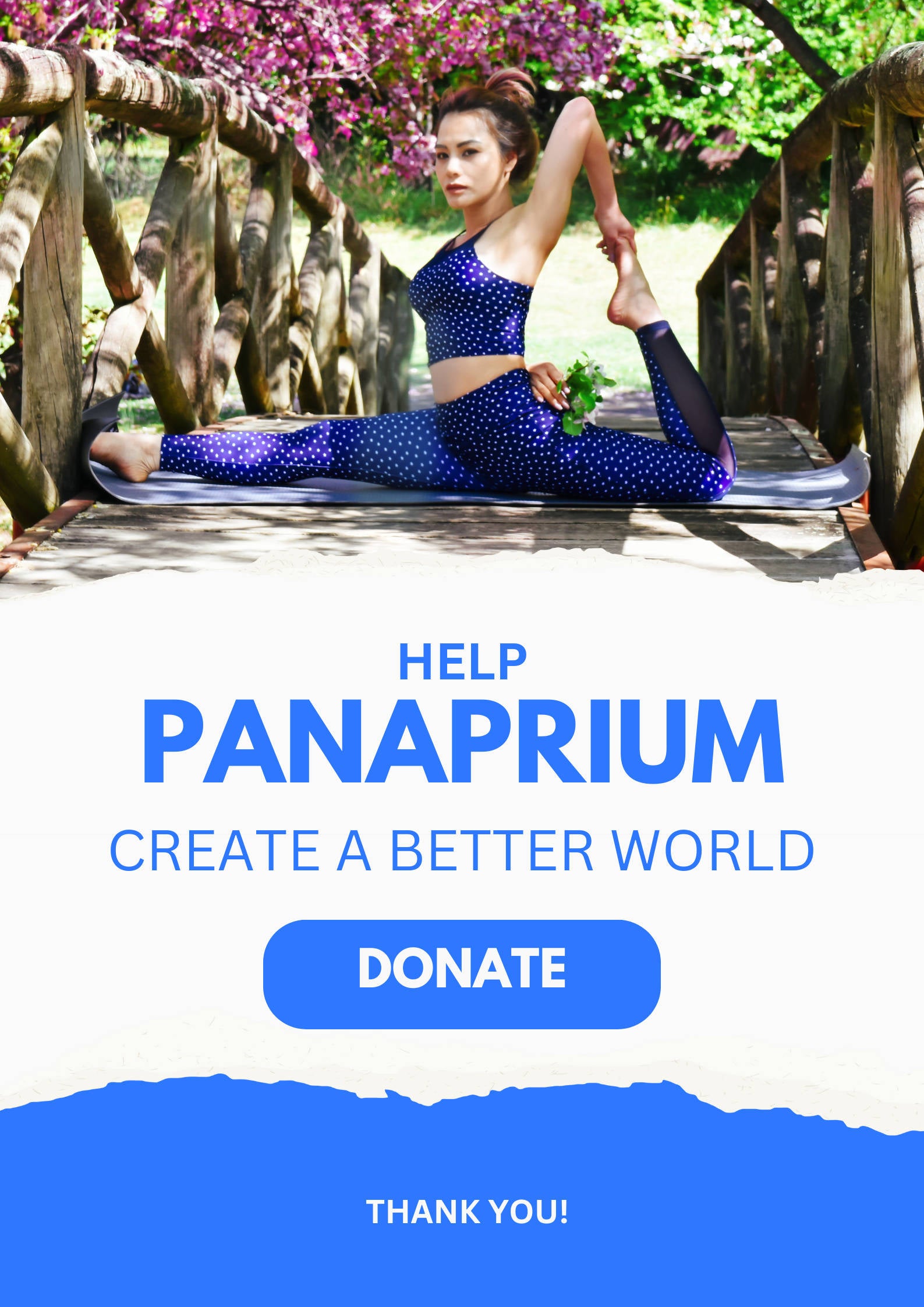
Shamanic healing, a spiritual practice rooted in ancient indigenous traditions, is gaining popularity in the modern wellness world. From energy clearing and soul retrieval to plant medicine ceremonies, more people are exploring these practices in search of deep emotional and spiritual healing.
But with this rise in interest comes an important question: Is shamanic healing safe?
This article takes a close look at shamanic healing from multiple angles—psychological, physical, spiritual, and cultural—to offer a comprehensive answer. While many people report transformative results, others have experienced confusion, emotional overwhelm, or even harm. The safety of shamanic healing depends on many factors, including the practitioner, the client’s mental health, and the methods used.
Panaprium is independent and reader supported. If you buy something through our link, we may earn a commission. If you can, please support us on a monthly basis. It takes less than a minute to set up, and you will be making a big impact every single month. Thank you!
What Is Shamanic Healing?
Shamanic healing involves accessing altered states of consciousness—often through drumming, chanting, breathwork, fasting, or sacred plants—to interact with spiritual dimensions. Shamans or practitioners perform rituals to restore balance, remove energetic blockages, retrieve soul fragments, or seek guidance from spirit allies.
Common techniques include:
-
Soul retrieval (restoring lost energy due to trauma)
-
Energy extraction (removing intrusive or stagnant energies)
-
Power animal retrieval
-
Ceremonial work (cleansing, blessing, ancestral healing)
-
Plant medicine journeys (e.g., ayahuasca, San Pedro)
These practices aim to heal the root cause of suffering—often seen as disconnection from the soul, nature, or spirit.
Why People Turn to Shamanic Healing
Many seek shamanic healing after conventional therapies fall short. Some are drawn to it for spiritual growth, others to process trauma, anxiety, grief, or life transitions. The appeal lies in its holistic approach—treating body, mind, emotions, and spirit as one.
However, as with any healing modality, it's vital to understand both the potential benefits and the risks.
The Benefits: Why Many Say It’s Safe and Transformational
Many people report that shamanic healing helped them:
-
Release trauma they couldn’t access through talk therapy
-
Regain a sense of power, clarity, and inner peace
-
Heal chronic emotional patterns
-
Connect with intuition, ancestors, or spirit
-
Feel lighter, clearer, and more aligned
There is also growing research into the psychological benefits of altered states, such as those induced by drumming or plant medicine. These states can promote neuroplasticity, emotional release, and shifts in perspective.
But the same processes that facilitate healing can also lead to emotional vulnerability, especially when not guided carefully.
The Safety Question: What Are the Potential Risks?
Let’s break down the risks into different categories so you can see where concerns may arise.
1. Psychological Risks
Shamanic healing can bring up repressed trauma, unresolved grief, or unconscious fears. For many, this is healing. But for others—especially those with fragile mental health—it can lead to:
-
Emotional overwhelm
-
Anxiety or panic attacks
-
Psychosis-like symptoms
-
Spiritual confusion or identity disruption
According to a 2022 review in Frontiers in Psychology, altered states such as those used in shamanic practice can be therapeutic, but can also destabilize vulnerable individuals—especially those with a history of psychosis, bipolar disorder, or PTSD.
Bottom line: Shamanic healing is powerful. But that power can be destabilizing without proper support, preparation, and integration.
2. Physical Risks (Especially with Plant Medicine)
Some shamanic healing includes the use of psychoactive plants such as:
-
Ayahuasca (from the Amazon)
-
San Pedro or Huachuma (a cactus with mescaline)
-
Iboga (a root bark from Africa)
These ceremonies are often intense, physically and emotionally. While some participants report miraculous healing, there are documented cases of:
-
Vomiting and purging
-
Cardiovascular complications
-
Interactions with medications (especially antidepressants)
-
Seizures or death (rare, but reported in poorly supervised settings)
According to a 2017 article in the Journal of Psychoactive Drugs, most adverse reactions occur when participants are unprepared, unscreened, or led by unqualified facilitators.
Tip: If considering plant medicine, research the ceremony, ask about medical screening, and disclose all medications and health conditions.
3. Spiritual or Energetic Risks
Shamanic traditions believe in spirit possession, energy attachments, and soul fragmentation. Whether you view these literally or symbolically, shamanic healing may open emotional or spiritual “doors” that can feel destabilizing.
Potential risks include:
-
Feeling “not yourself” after a session
-
Difficulty grounding or returning to normal life
-
Spiritual bypassing (avoiding psychological work in favor of mystical experiences)
-
Opening up to energies you don’t understand or can’t handle
These aren’t common, but they are reported—especially by people who dive into spiritual practices too fast, without proper support or preparation.
4. Cultural and Ethical Concerns
Cultural appropriation is another issue. Many people offer “shamanic” services without understanding the cultural or ethical background of the practices. This can lead to:
-
Superficial or unsafe practices
-
Misuse of sacred rituals
-
Disrespect toward Indigenous communities
Working with untrained or self-declared shamans can put you at risk emotionally, financially, or spiritually.
What Makes Shamanic Healing Safe?
Here are the factors that make a huge difference in whether a shamanic experience is safe, empowering, or harmful:
1. The Practitioner’s Integrity and Training
Look for someone who is:
-
Trained in an authentic lineage or tradition
-
Trauma-informed
-
Transparent about their background
-
Willing to refer you to other professionals if needed
-
Not making unrealistic promises or diagnoses
Avoid practitioners who:
-
Claim to have all the answers
-
Pressure you to pay large sums upfront
-
Dismiss your concerns or discomfort
-
Encourage dependency
2. Your Psychological Readiness
Ask yourself:
-
Am I mentally and emotionally stable enough for deep inner work?
-
Do I have a therapist, coach, or support system to help me integrate?
-
Am I doing this from a grounded place, or to escape my pain?
Shamanic healing can amplify what’s already inside you. Make sure you’re prepared.
3. Setting, Preparation, and Integration
A safe healing session includes:
-
A safe, quiet space
-
Clear intentions set beforehand
-
Gentle grounding afterward
-
Follow-up support to integrate the experience
If you're working with plant medicine, make sure there's:
-
Medical screening
-
Trained facilitators or healers
-
Access to aftercare or therapeutic support
4. Voluntary Participation and Consent
Any ritual or healing work should only be done with your clear consent. Coercion, secrecy, or blind trust can lead to harmful situations.
You always have the right to:
-
Ask questions
-
Stop a session
-
Decline rituals or suggestions
What the Research Says
While formal research is still growing, several studies suggest shamanic healing can be safe and beneficial when practiced responsibly:
-
A 2013 study in Mental Health, Religion & Culture found that shamanic healing improved well-being in participants with chronic emotional issues, particularly when paired with integration therapy.
-
A 2018 study published in Frontiers in Pharmacology showed that carefully guided ayahuasca use resulted in improved depression and anxiety scores, with minimal side effects when participants were screened and supported.
-
A 2021 survey of spiritual seekers found that people reported greater long-term benefits from shamanic work when they had done preparation and had access to post-ceremony support.
Conclusion: Is Shamanic Healing Safe?
Yes—but only under the right conditions. Shamanic healing can be profoundly safe, healing, and life-changing if:
-
The practitioner is experienced and ethical
-
You are psychologically stable and well-prepared
-
You take time to integrate and reflect
-
You approach the practice with respect and personal responsibility
But it can also be destabilizing or even dangerous when approached carelessly, without support, or in the hands of an unqualified facilitator.
Like any powerful healing method, shamanic healing is not a quick fix. It requires courage, discernment, and integration. It’s not for everyone—but for those who feel called, it can be a doorway to wholeness.
Final Thoughts
In the end, the safety of shamanic healing is less about the practice itself and more about how, why, and with whom it’s done.
If you’re considering a session, do your homework. Ask questions. Listen to your intuition. And most importantly, stay grounded. True healing isn’t just mystical—it’s also practical, respectful, and safe.
Was this article helpful to you? Please tell us what you liked or didn't like in the comments below.
About the Author: Alex Assoune
What We're Up Against
Multinational corporations overproducing cheap products in the poorest countries.
Huge factories with sweatshop-like conditions underpaying workers.
Media conglomerates promoting unethical, unsustainable products.
Bad actors encouraging overconsumption through oblivious behavior.
- - - -
Thankfully, we've got our supporters, including you.
Panaprium is funded by readers like you who want to join us in our mission to make the world entirely sustainable.
If you can, please support us on a monthly basis. It takes less than a minute to set up, and you will be making a big impact every single month. Thank you.































0 comments